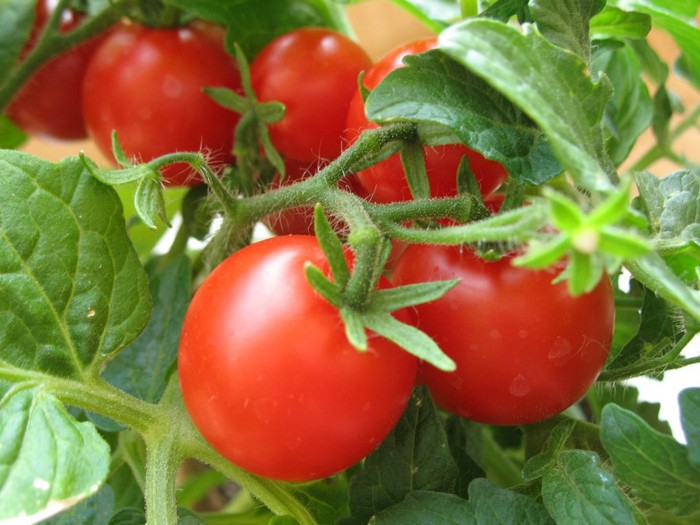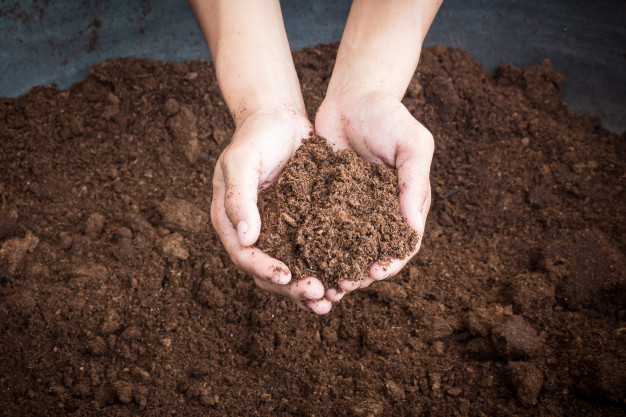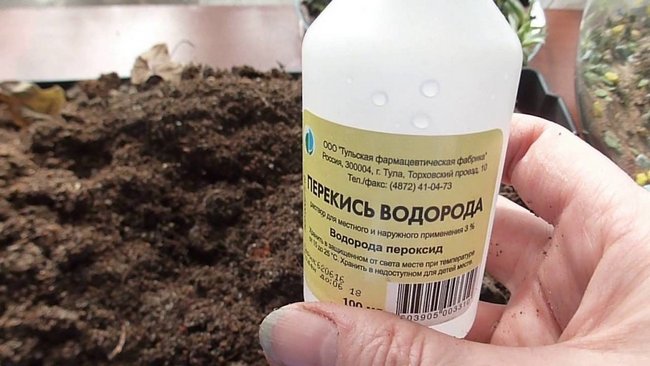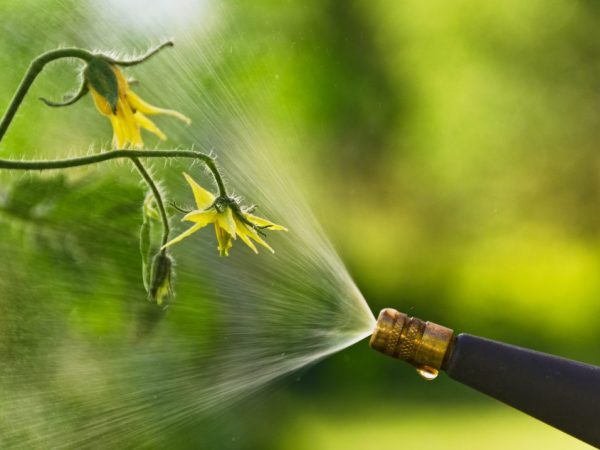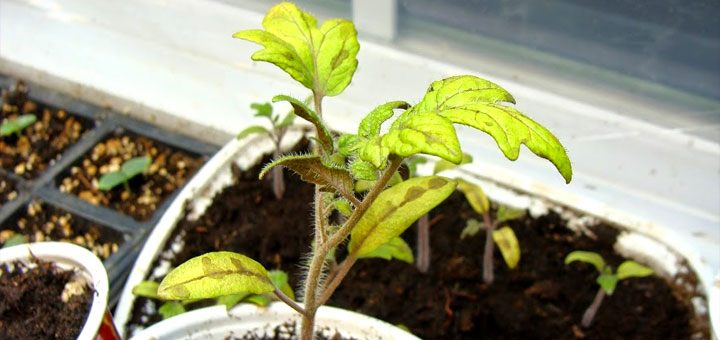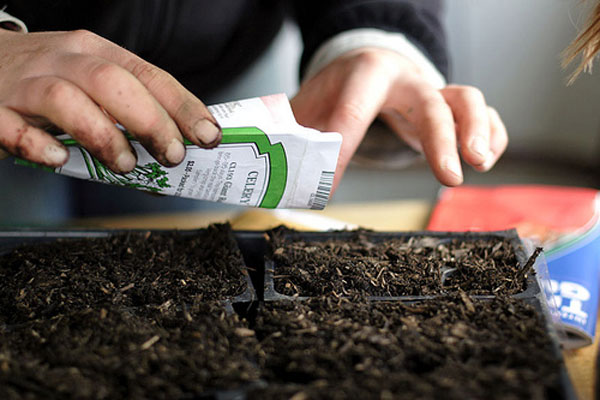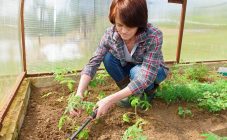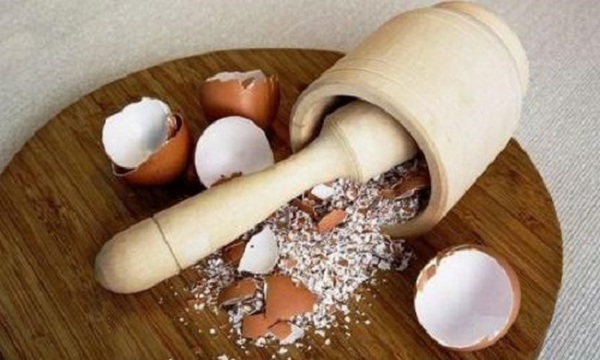Content:
Hydrogen peroxide is an environmentally friendly substance, similar in composition to rainwater. By releasing active oxygen, peroxide has a disinfecting effect on the pathogenic microflora of not only humans and animals, but also plants. Growing healthy and strong seedlings directly affects the future harvest and its quantity.
Description of culture
Tomato is a vegetable crop belonging to the nightshade family. Heat-loving tomatoes are grown mainly through seedlings as an annual crop. Varieties that can be grown by direct seeding in open ground also need temporary shelters.
Tomato varieties are divided into early, mid and late ripening. According to the type of growth of the bush, there are determinant, semi-determinant and indeterminate varieties of tomatoes. Regardless of the type of tomato, sowing requires highly fertile, well-drained soils, adherence to a thermal regime and uniform watering.
The fruit of a tomato is a juicy berry of various sizes, colors and tastes. Tomatoes have a high nutritional value, they are used both raw and in various preparations: pickling, salting and drying.
Gardeners are trying every year to succeed in growing tomatoes, to discover various ways to improve the quality of seedlings. In unfavorable growing conditions, the stems of tomatoes are stretched, have weak, pale shoots, and are more susceptible to disease. Preparation for sowing, treatment of planting containers, soil and seeds with hydrogen peroxide bring positive results when growing seedlings.
Hydrogen peroxide for seedlings
Hydrogen peroxide is a colorless liquid, readily soluble in water, completely harmless for use in growing seedlings and adult plants.
Tomatoes planted in seedlings are started to be sown in seedling boxes at home, depending on the variety and climatic conditions of growth, 1.5-2 months before planting in open ground. Healthy, strong seedlings adapt and develop faster in a greenhouse.
Before transplanting into the ground, young tomatoes should have a thick stem, large leaves, the presence of flower brushes and a well-developed root system. In order to safely grow high-quality seedlings at home, it is important to prepare the seeds and soil for planting.
Soil preparation
The substrate for tomato seedlings can be purchased ready-made or assembled independently from several components. The basis of purchased soil is often high moor peat, which does not conduct moisture well and has high acidity, which is not particularly suitable for young seedlings. To grow seedlings, it is better to take low-lying peat, add garden soil and humus to the soil bought in the store.
The preparation of the soil for seedlings is carried out a few days before planting, it is harvested in quantities with the expectation of further picking, for which you need to use the same soil composition as for sowing.
For a substrate of their own preparation, take in equal parts humus, peat and sod land.Spores of fungi, larvae of pests can live in the garden soil, therefore, the resulting soil must be disinfected.
Often, calcination or watering the soil with boiling water is used for disinfection, but when heated, beneficial microorganisms die along with harmful ones. After warming up, it is necessary to apply an increased amount of mineral fertilizers to the soil. In addition, roasting the soil in the oven is unhygienic and produces an unpleasant odor.
It is most favorable to disinfect soil with hydrogen peroxide. Hydrogen peroxide 3% is poured in a dosage of 3 tbsp. l per 1 liter of water, in case of doubt about the quality of the soil, the dosage can be used large, up to 5 tbsp. l. It is better to spray the soil with a disinfectant than to spill it. The soil, which is required in large volumes, is sprayed gradually, periodically turning the layers to completely moisten the entire mass of the earth.
The use of hydrogen peroxide for the soil helps it additionally aerate it - saturate it with oxygen, this is especially important when using purchased soil for seedlings, which has been in closed packaging for a long time.
Seed preparation
Before sowing, the seeds are calibrated to remove any hollow, damaged and small specimens. The sorted seeds germinate more amicably, the seedlings lagging behind in growth will not allow stronger plants to develop even after transplanting into open ground. After culling, the seed is disinfected with hydrogen peroxide, which replaces potassium permanganate and various fungicides in order to get rid of the harmful environment on the surface of the seeds.
Seed preparation methods using hydrogen peroxide:
- The seeds are poured with 3% hydrogen peroxide, without dilution, so that the liquid completely covers them. The seeds are left in the liquid for 10 minutes, then poured onto a sieve and rinsed with clean water;
- Seeds are poured with diluted 3% hydrogen peroxide. Dilute the peroxide, taking 9 parts of water to 1 part of the product. Leave the seeds in such a solution for 12 hours, poured onto a sieve without washing with water;
- The seeds are laid out on a pallet, sprayed with an undiluted 3% solution and allowed to dry for easier sowing.
In order to avoid the occurrence of chemical reactions, procedures for seeds using hydrogen peroxide are not carried out in metal containers.
The positive effect on the seeds of hydrogen peroxide lies not only in its disinfecting properties, but also in the action to destroy the seed coat. Tomato seeds are coated with inhibitors that inhibit germination. In nature, in the natural conditions of open ground, the film covering the seeds is separated by the action of oxidants in the soil.
The use of hydrogen peroxide for tomato seedlings when grown indoors and the destruction of the seed coat with it helps to ensure more friendly seedlings.
Soaking the seeds and maintaining the necessary soil moisture will allow the sprouts to emerge from the soil without the seed coat adhering to the green leaf. If the seed coat is on the leaf during germination, it should be carefully removed with tweezers, before slightly moistening it with water.
Other beneficial properties of hydrogen peroxide for seedlings:
- has a disinfecting and oxidizing effect on the soil, which helps in the prevention of diseases of tomatoes and other vegetable and flower crops;
- the oxygen atom in the peroxide is freely separated, enriching the soil composition and internal parts of the plant with oxygen;
- improves the quality of water for irrigating seedlings, neutralizes the effect of pesticides, chlorine and nitrates;
- helps plants to absorb nutrients from the soil.
Seedling care
In addition to disinfecting seeds and soil, hydrogen peroxide is used to care for tomato seedlings:
- Watering. For plants, watering with rainwater or melted snow is well suited, but this method is not always available to gardeners. Often, for watering tomato seedlings, tap water is used, which must first be defended. To improve the quality of water, peroxide is added to it in the ratio: 2 tablespoons per 1 liter of water, poured in small portions under the root, using a watering can with a narrow spout or a syringe. The addition of hydrogen peroxide enriches the water with oxygen and purifies, sometimes this composition completely replaces conventional irrigation or uses it once every 6-7 days.
- Spraying. The solution for spraying is used in the same ratio as for irrigation - 2 tbsp. l. peroxide per 1 liter of water. Irrigation is carried out once a week using a fine pulverizer. Scattering is carried out over the grown seedlings, which gives the leaves additional oxygen, disinfects their damage. It should be sprayed in the morning or in the evening so that the moisture remaining on the leaves does not burn the plant under the influence of sunlight. For irrigation and irrigation of seedlings, water at room temperature is used.
- Fertilizer. When applying large amounts of fertilizers to the soil and treating fungi with preparations containing copper, the iron in the soil forms forms of salts that are difficult for plants to access. The use of peroxide is capable of reducing iron salts in the soil. The solution also affects the presence of manganese salts in the soil, which has a positive effect on the process of photosynthesis, the content of vitamins in the fruits and the prevention of chlorosis and various kinds of spotting. Hydrogen peroxide on its own is not used as a fertilizer; it will not work to feed plants with it. But peroxide, having a beneficial effect on the soil, allows plants to better absorb the beneficial trace elements present in the soil.
Peroxide is also used during a dive, spraying the soil and plant roots. But thin roots, when treated with peroxide, can die off. The disinfectant composition is also used to treat damaged plant surfaces.
Wells are also treated with hydrogen peroxide, which are prepared in a greenhouse for transplanting seedlings. The action of peroxide in this case will help disinfect the soil from pests that leave overwintering larvae in it.
Seedling diseases and pests
Diseases of tomato seedlings occur when using poor-quality seed, contaminated soil or improper care.
At the stage of growing seedlings, tomatoes are more often susceptible to fungal diseases.
Blackleg is a fungus, the appearance of which is expressed in the thinning of the tomato stem at the soil level. Spores in the soil are activated in conditions of high humidity and thickened seedlings. The infected plant must be removed, the place of its growth is disinfected.The fungus is capable of destroying all seedlings, so it is important to prevent its appearance when growing seedlings. To prevent the occurrence of a black leg, the soil must be disinfected before planting, moderate watering should be carried out.
In order to avoid contamination of seedlings, you must follow the rules for the preparation and growing of tomatoes:
- Use cleaned soil.
- When choosing seeds, pay attention to their storage periods, subject to pre-sowing treatment, including independently harvested seed material.
- Observe the temperature and humidity in the place where the seedlings are kept, avoiding sudden temperature changes. When growing seedlings on cold windowsills, a warming material is laid between the surface of the window sill and the planting containers.
- Watering the seedlings is carried out as the upper part of the soil dries up. During watering, they try to avoid liquid getting on the green parts of the plant, the leaves do not come into contact with the soil.
- Tomatoes need to provide adequate light throughout the day.
- Do not use seedlings in excess.
The use of hydrogen peroxide can prevent late blight disease - a fungal disease that occurs with poor ventilation, high humidity and dense planting, as well as improper formation of tomato bushes. To prevent late blight, plants are sprayed with a solution of hydrogen peroxide on the leaves, including on their back.
At home, seedlings are less damaged by pests than in the open field. With the help of peroxide, plants can be treated against aphids, scale insects and hairy lice.
Hydrogen peroxide for tomato seedlings is a safe, disinfectant and aerating agent for soil and plants. Growing tomatoes in loose, clean soil allows you to form strong, healthy seedlings and get a high yield of tomatoes in the future.
